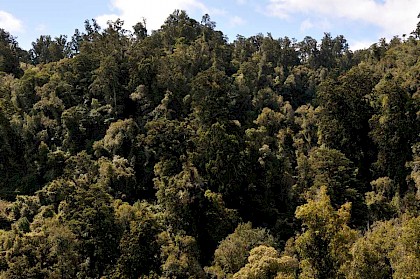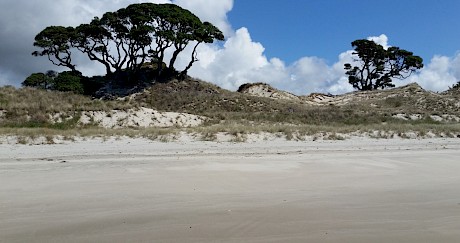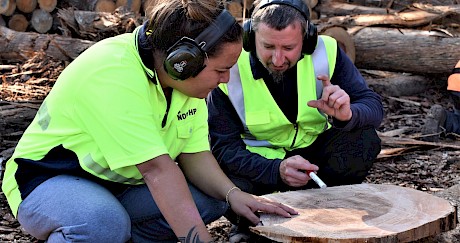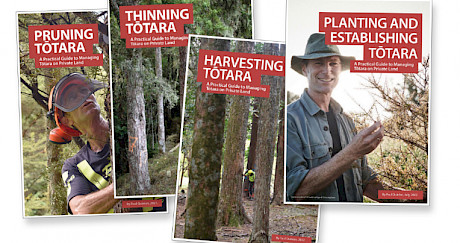Our Forests Our FutureProject Status: Completed
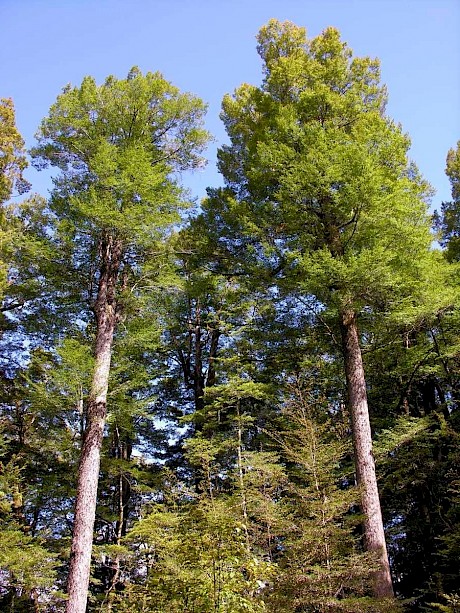 Managed beech forest in the South Island. Photo credit: Ian Platt
Managed beech forest in the South Island. Photo credit: Ian Platt
Introduction
The third and final year of the implementation phase of Our Forests Our Future (OFOF) project, supported by The Tindall Foundation and managed by TTT, has been completed. This project aims to demonstrate the benefits of integrating native forest into our productive rural landscapes.
The project comprised five workstreams with the following outcomes:
Workstream 1 - Demonstration planted native forests
A network of 12 demonstration planting areas was established nationwide evaluating a range of planting treatments and sites from Northland to Southland. Key species planted include conifers, kauri, tōtara, rimu, tanekaha and kahikatea; tree hardwoods beech, puriri, rewarewa, kohekohe, kanuka; and shrubs manuka, kohuhu, akeake, karamu, ti kouka, tarata, five finger.
Data from monitoring plots provides valuable insights into refining best practice planting and management including planting density, use of nurse shelter, browsing animal protection, microsite selection and seedling grade.
Growth data from over 50 existing native plantations has been used to develop growth and yield models to underpin carbon sequestration and economic calculators. All sites are planted, monitored and maintained in collaboration with project partners including community groups, NGOs, councils, Pamu Farms, Maori Trusts, landowners, forestry companies, DOC and research providers.
Research leads for this workstream were David Bergin and Michael Bergin with substantial involvement of biometrician Mark Kimberley.

Workstream 2 – Building on the Northland tōtara work
This workstream focused on supporting the Northland Tōtara initiatives and advocating more generally for the management of naturally regenerating native forests on private land – not just tōtara.
This past year’s work involved continuing to add to the Northland Tōtara Working Group database, responding to general enquiries, field trips, workshops and dialogue with regulators, policymakers, academics and students, supporting the next phase preparation for the Tōtara Industry Pilot, and contributing to the O Tatou Ngāhere campaign.
Highlights of the last year’s accomplishments include:
- Thinning and pruning demonstration area developed within a tōtara forest under a SFM Plan on the Pāmu (Landcorp) Kapiro station property.
- A field day with Forestry students from the Canterbury University School of Forestry.
- Filming tōtara pruning for a Country Calendar episode that featured Cassie’s Farm.
- Arrange Scion to investigate sites of apparent tōtara dieback.
- Scope new research project on managing exotic to native forest transitions.
- Providing advice to landowners interested in the management of planted and naturally regenerated tōtara.
This work will continue under the Normalising Native Forestry Programme – as part of the new Workstream 2: Promoting Nature-based indigenous forestry in Aotearoa.
Workstream 3 – Non-timber values and the business case for native forestry
The main aims of this workstream have been to identify and quantify non-timber values (NTVs) and raise awareness of the wider value of native forests among policymakers, land managers, and industry stakeholders. NTVs are any products or services associated with forests, other than timber or wood fibre. They are part of the concept of ecosystem services or ‘natural capital’, i.e., all aspects of natural environments needed to support life and human activity.
Credible business cases for native forests as a land use are dependent on the inclusion of NTVs and lowering the costs in native forest establishment. The latter has been a major focus of research and development for TTT. There is a good case for development of incentive schemes for native forest establishment, based on NTVs.
Native forests provide many NTVs that most of us are not fully aware of until they are damaged or lost. Our very survival is dependent on the natural world – we all need food, water and shelter. However, there is now increased awareness of the importance (and vulnerability) of New Zealand’s natural capital, which is becoming increasingly important in planning and policy matters.
Our research on NTVs has been (or will soon be) published in multiple forums. 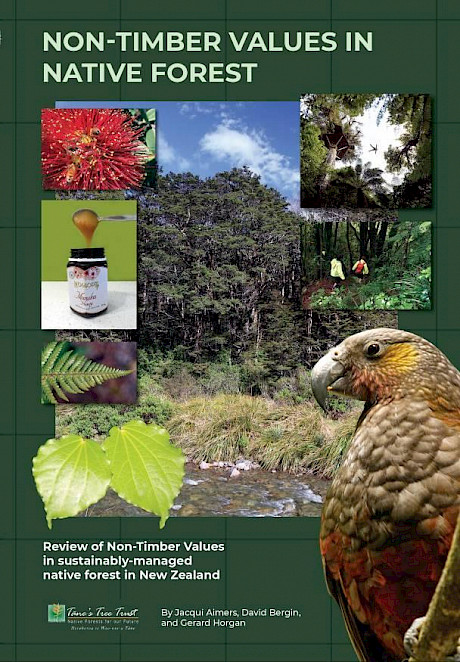 The NTVs bulletin can be downloaded from the TTT website and on this link. Hard copies of the NTV bulletin are also available from the TTT Office Enable JavaScript to view protected content..
The NTVs bulletin can be downloaded from the TTT website and on this link. Hard copies of the NTV bulletin are also available from the TTT Office Enable JavaScript to view protected content..
Salient points from the NTVs work:
- There has been an imbalance between those benefiting from short-term economic gains of natural resource exploitation and the local communities who suffer the long-term environmental, cultural, and socioeconomic impacts from non-sustainable use of our natural resources.
- Weaving native forest back into our rural and urban landscapes will provide a myriad of services that will improve environmental and cultural values; and it will help mitigate the effects of climate change, urbanisation, and intensification of land use.
- While there has been considerable research on some of the more easily quantified NTVs, this has generally been narrowly focussed, so that the aggregated wider value of native forests has not been fully comprehended.
- There is limited information on NTVs that are more difficult to quantify, particularly NTVs associated with cultural and spiritual values. These are important, nonetheless - the challenge of valuing the invaluable - i.e., NTVs that have no direct material benefits.
- The COVID-19 pandemic has helped change the way people think. There is an increased focus on natural health and wellness, with connection with Nature recognised as important for our well-being.
- Despite identified knowledge gaps, it is apparent that sustainably-managed native forest deserves a higher profile as an economically viable land use, particularly in environmentally sensitive catchments, on erosion-prone soils, in scenic landscapes, and where indigenous biodiversity and cultural and spiritual values are important.
- Aggregated NTVs of permanent native forests are likely to be greater than that for clear-fell, exotic plantations.
- Native forest in riparian areas is likely to have particularly high aggregated NTVs.
- Native forestation should be incentivised as the benefits accrue far beyond the sites where landowners sustainably manage and extend native forest cover.
- An evidence-based article on carbon sequestration in native species has recently been published pureadvantage.org/carbon-sequestration-by-native-forest-setting-the-record-straight/. It challenges the reliability of the MPI look-up tables for native forest, which are based on unmanaged, regenerating shrubland, not on managed native forest.
- There is a risk of perverse outcomes if there is a focus on a single NTV such as carbon sequestration, to the neglect of all other NTVs.
- However, biodiversity is a pivotal NTV, which is likely to leverage most other NTVs, i.e., actions to increase biodiversity values are likely to concurrently improve most (possibly all) other NTVs.
The sustainable management of multiple-use native forests established on previously cleared lands, including high value timber tree species such as totara, kauri, and beeches, has the potential to transform the economies of small communities in many regions of New Zealand. In addition to economic benefits, including increased local employment opportunities, managed native forestry will build resilience into our landscapes for landowners, ecosystems and the wider community.
The Our Forests Our Future project aims to demonstrate the potential, both financially and operationally, and at scale not done before, of establishing and managing native forest for multiple purposes. This project will demonstrate that planted and managed native forestry can provide both production opportunities and substantial conservation benefits within our productive landscapes. It is these productive landscapes that are invariably lacking in local indigenous biodiversity that do not have diverse environmentally sound land-use options for landowners and the wider community to consider.
The wider values of native forest have been recognised (along with carbon sequestration) in the Climate Change Commission’s advice to government - Ināia tonu nei: a low emissions future for Aotearoa, which was publicly released on 31/05/21 www.climatecommission.govt.nz/our-work/advice-to-government-topic/inaia-tonu-nei-a-low-emissions-future-for-aotearoa/.
Future work by Tāne’s Tree Trust’s in this area will include:
- Use of the NTVs work in our ongoing advocacy for native forest to be woven back into all our landscapes, including intensively farmed lowlands and urban areas, as well as marginal hill country.
- A prototype NTVs assessment tool has been developed to support decision making in restoration of native forest. This needs to be evaluated by end-users and refined. It is part of a suite of tools being developed by TTT, as described elsewhere in this report.
- There is a case for compensating landowners for NTVs that accrue to the wider community, but do not currently have a market value. TTT will continue, where it can be justified, to advocate for incentives for landowners.
- We will also continue to provide technical support for developing an incentives system, based on biodiversity credits or payment for ecosystem services. This includes working with allied organisations and providing information for policymakers in the development of incentives schemes for native forest establishment and management.
Workstream 4 – Technical advisory role
The reach of technical knowledge on best practice establishment and management of native forests has increased exponentially over the 3 years of this OFOF programme. Some 16 conference, workshop and field-based presentations were undertaken nationwide promoting science-based best practice guidelines on planting natives to audiences including farmers, foresters, iwi, community groups, academics, policy makers and council staff. A key output is the co-funding initiative of a video series.
Over 30 visits were hosted to demonstration sites, farms and forests from Northland to Southland in collaboration with project partners. TTT continues as the key technical provider to Trees That Count with joint initiatives underway including development of a user-friendly online monitoring system for planted natives.
This workstream has culminated in the launch of O Tatou Ngahere, a joint campaign by Pure Advantage and TTT championing the role native species play in the future of forestry in Aotearoa.
Workstream 5 – Governance
The Project Governance Group comprising the executive of TTT provided both technical and financial oversight including delivery and promotion of the project.
For more information on the Our Forests Our Future project contact:
- Peter Berg, Chair, Tāne’s Tree Trust Enable JavaScript to view protected content.
- Mel Ruffell, TTT CEO Enable JavaScript to view protected content.

